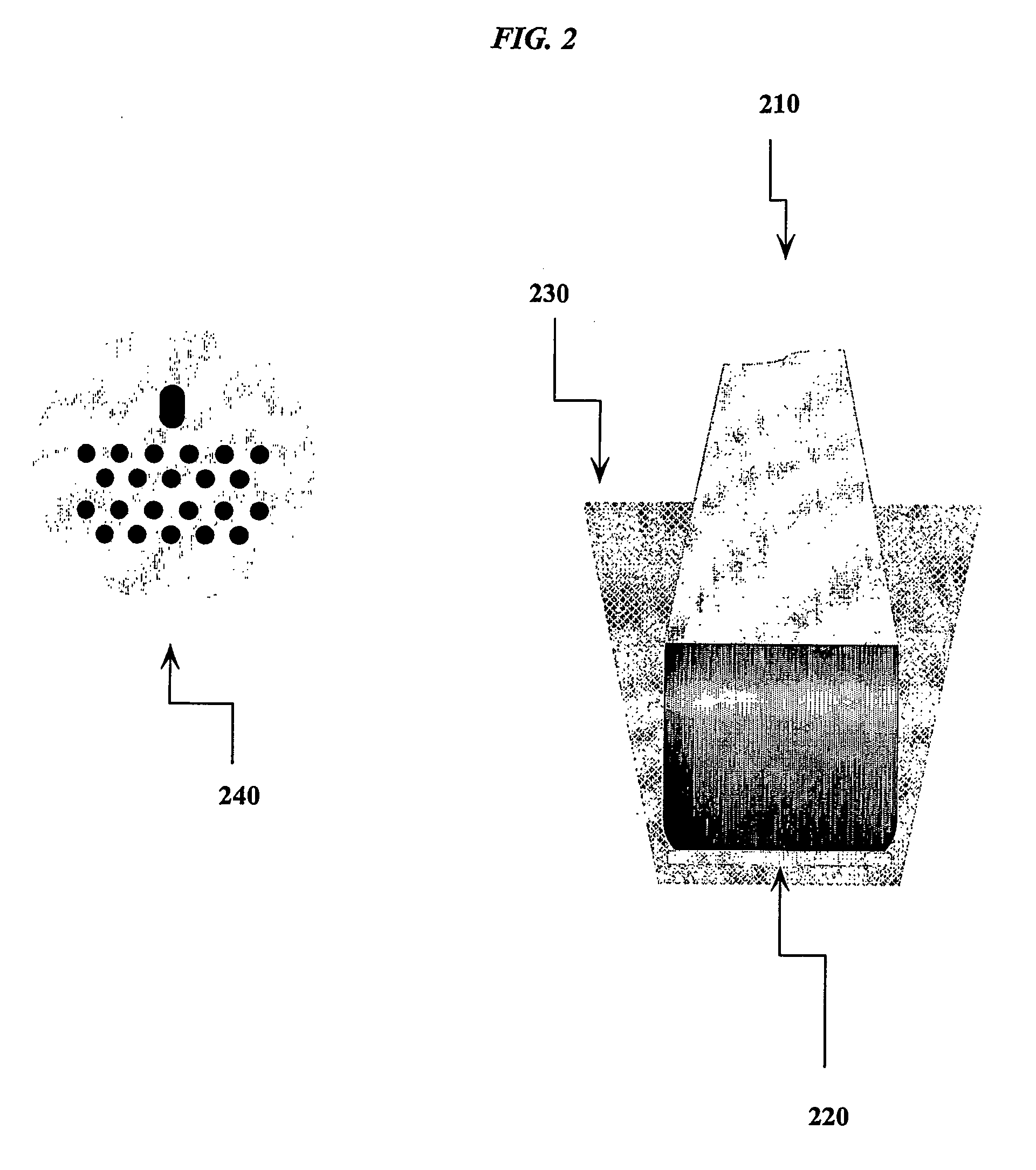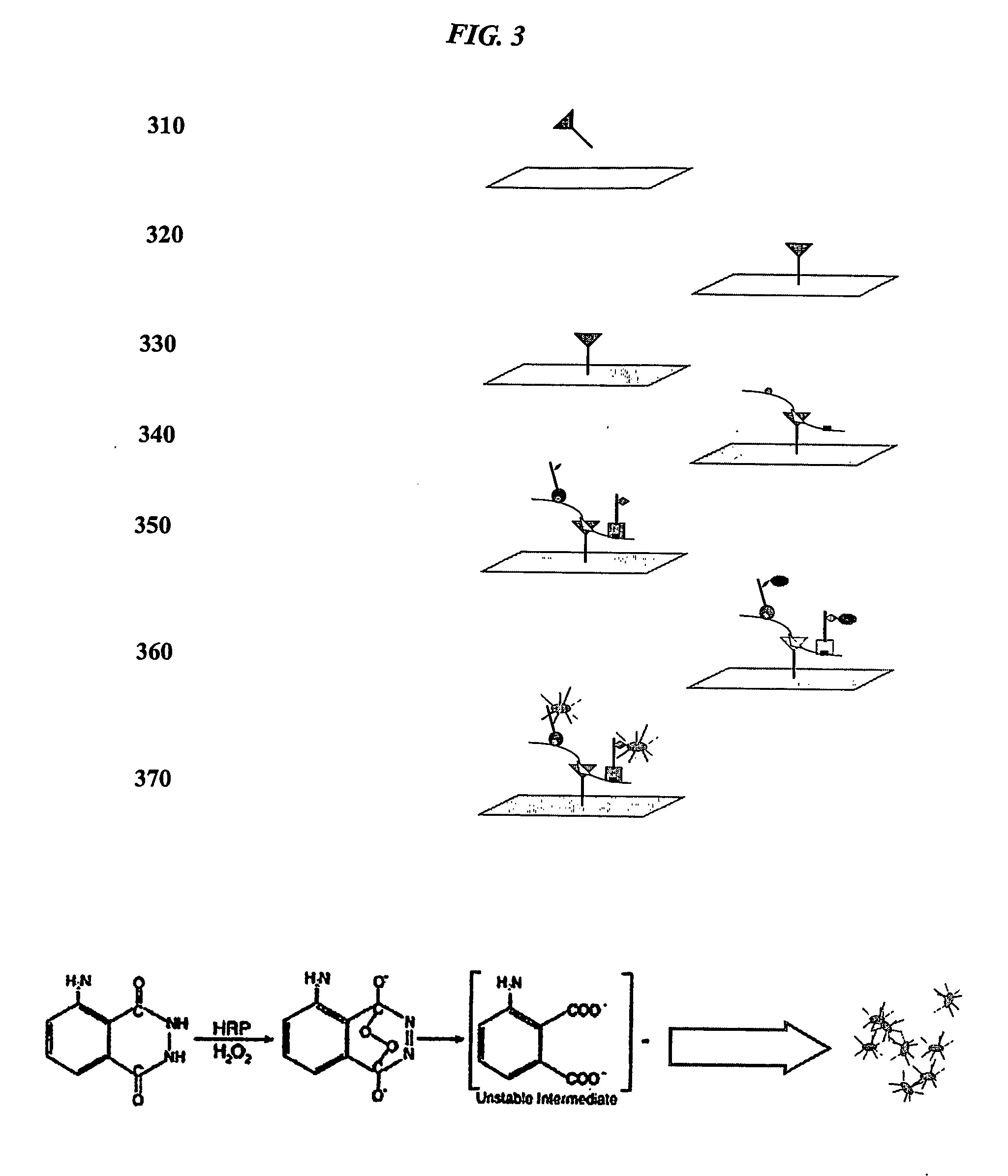Translucent solid matrix assay device dor microarray analysis
a matrix assay and translucent technology, applied in the field of microarray analysis, can solve the problems of high cost of production, low detection sensitivity and false negative detection, and bioanalyte detection in particular, and achieve the effect of high probe level and low cos
- Summary
- Abstract
- Description
- Claims
- Application Information
AI Technical Summary
Benefits of technology
Problems solved by technology
Method used
Image
Examples
example 1
Microarray Formation Using Translucent Nitrocellulose Coated Slides
[0319] Colloidal nitrocellulose slides may be spotted with probes using any known methods for microarray production. Methods for spotting proteins, peptides, oligonucleotides and nucleic acids onto nitrocellulose surfaces are well known in the art. Antibodies and biotinylated bovine serum albumin were used to determine the colloidal nitrocellulose binding capacity. The estimated protein binding capacity for the initial matrix arrays was in the range of 100 to 200 μg / cm2.
[0320] A CMOS imaging system that detected light emissions through the translucent nitrocellulose matrix arrays was used with a Cy5-streptavidin indicator dye. (See, e.g., U.S. patent application Ser. No. 09 / 974,089, filed Oct. 1, 2001.) At a loading volume of approximately 5 nanoliters per spot, biotinylated BSA was reproducibly detected at least down to 10 to 20 picograms of protein. Optimal CMOS images were obtained using a protein concentration ...
example 2
Bioluminescent Detection Sensitivity for Virus Analytes
[0323] Rous sarcoma virus (RSV) was titered using primary antibody probe binding and HRP-SA bioluminescent detection as disclosed above. Prespotted slides containing anti-RSV antibodies were prepared for RSV. RSV was serially diluted 10 fold with each dilution to finally reach a lower limit of detection where no further spots were detected. A lower limit of detection was estimated at is 0.000091 IU / mL for bioluminescent detection (1013 fold dilution from the initial stock titer).
[0324] All of the COMPOSITIONS, METHODS and APPARATUS disclosed and claimed herein can be made and executed without undue experimentation in light of the present disclosure. While the compositions and methods of this invention have been described in terms of preferred embodiments, it will be apparent to those of skill in the art that variations may be applied to the COMPOSITIONS, METHODS and APPARATUS and in the steps or in the sequence of steps of the...
PUM
| Property | Measurement | Unit |
|---|---|---|
| size | aaaaa | aaaaa |
| size | aaaaa | aaaaa |
| size | aaaaa | aaaaa |
Abstract
Description
Claims
Application Information
 Login to View More
Login to View More - R&D
- Intellectual Property
- Life Sciences
- Materials
- Tech Scout
- Unparalleled Data Quality
- Higher Quality Content
- 60% Fewer Hallucinations
Browse by: Latest US Patents, China's latest patents, Technical Efficacy Thesaurus, Application Domain, Technology Topic, Popular Technical Reports.
© 2025 PatSnap. All rights reserved.Legal|Privacy policy|Modern Slavery Act Transparency Statement|Sitemap|About US| Contact US: help@patsnap.com



